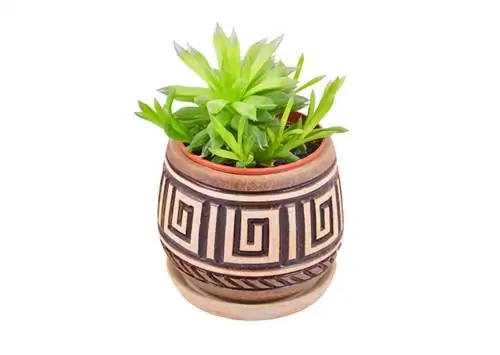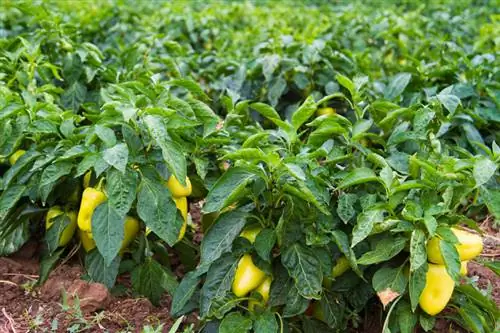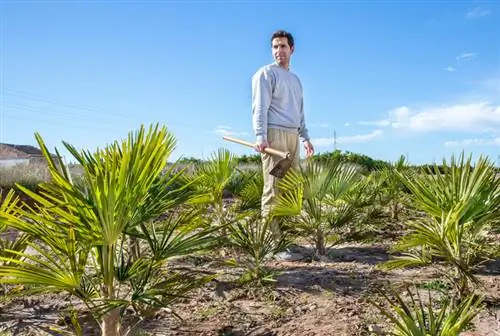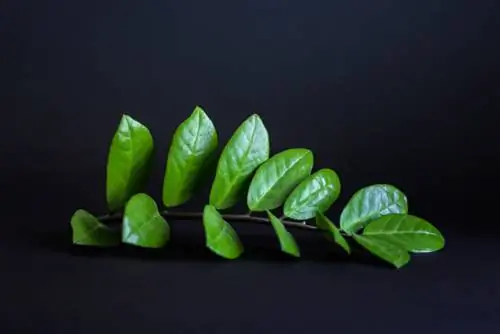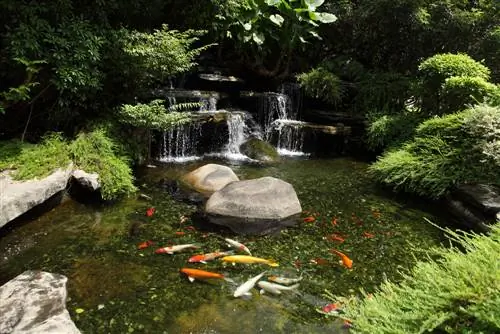- Author admin [email protected].
- Public 2023-12-16 16:46.
- Last modified 2025-01-23 11:20.
Agave, which is part of the asparagus family, does not bloom as often or regularly as some other garden plants, but agaves are still very popular in many gardens or in pots on the windowsill. After all, many gardeners are reminded of Mediterranean vacation spots by the prickly beauties and cuttings from the plants can be obtained relatively easily.
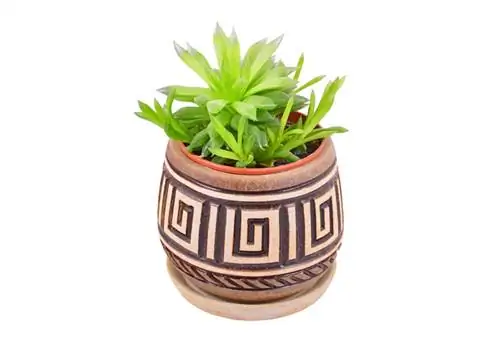
How to propagate an agave?
To propagate an agave, either seeds can be used or any side shoots (kindel) can be separated as rooted or unrooted offshoots and rooted in fine sandy substrate or water glass. The young plants should then be left in indirect light for a few weeks before being transplanted.
The difficulties of sowing agaves
A certain problem when propagating agaves by sowing is obtaining the seeds. After all, with the so-called “hundred-year-old agaves” it takes at least a few decades until the plant blooms for the first time and often for the only time at all. This means that the extraction and trading of fresh seeds can only take place to a limited extent. Although smaller types of agaves can bloom after just a few years, growing agaves from seeds is not particularly practical in terms of the effort and time required. After all, plants in nature do not limit themselves exclusively to seed formation, but rather form side shoots known as kindles, which can be obtained as offshoots.
Get rooted offshoots and care for them properly
With agaves cultivated in pots, it is not uncommon for the pot to become cramped, and not just because of the growth of the actual main plant: sometimes several offshoots push up between the mother plant and the edge of the pot and require repotting into a larger one vessel necessary. In any case, agaves should be repotted about every two to three years, immediately after wintering. You can use this opportunity to carefully cut off the offshoots with a sharp knife. Make sure to include any roots on the offshoot as completely as possible, as these make growth much easier and faster. The young plants should not be left in full sun for a few weeks and should be watered sparingly before they are moved to their final location.
Properly separate unrooted children and allow them to be rooted
Agave side shoots do not always grow below the substrate surface. Nevertheless, children sitting directly on the stem can also be used for propagation. After cutting there are different options:
- let the children root in the water glass
- place the cuttings in a pot with fine sandy substrate for rooting
- choose a place with indirect light on the windowsill as a location for the first few weeks
Tip
Sometimes it happens that older mother plants rot over the winter due to excessive moisture or show signs of this on the leaves in spring. You can still save offshoots that are already visible if you separate them in good time and water them very sparingly in a new planter.

